Are you navigating the complexities of a consortium agreement? It can often feel overwhelming, but understanding the essential components can simplify the process. In this article, we'll break down the key elements you need to include in your letter template, ensuring clarity and collaboration among all parties involved. So, let's dive in and explore how to craft a solid foundation for your consortium agreement!

Purpose and Objectives
The purpose of the consortium agreement is to establish a collaborative framework among the participating organizations, including academic institutions, research entities, and industry partners. This agreement outlines the collective goals such as advancing scientific research, fostering innovation, and sharing resources effectively. Key objectives include the coordination of joint research projects, the establishment of intellectual property rights, and the promotion of knowledge exchange and capacity building among members. Additionally, the agreement aims to define mechanisms for funding allocation, project management, and reporting obligations, ensuring transparency and accountability among consortium partners. The ultimate aim is to enhance collaborative efforts to achieve impactful outcomes in areas such as renewable energy, biotechnology, and information technology.
Roles and Responsibilities
A consortium agreement outlines the roles and responsibilities of partner organizations involved in a collaborative project. Each partner contributes unique expertise, resources, and capabilities. Responsibilities may include project management, resource allocation, data sharing, and compliance with regulations. Financial contributions outline the funding commitments from each partner, ensuring equitable distribution of costs. Reporting responsibilities establish timelines for updates and deliverables, maintaining accountability throughout the project lifecycle. Additionally, intellectual property rights clarify ownership of findings and innovations resulting from the partnership. The governance structure defines decision-making processes and conflict resolution mechanisms, ensuring smooth collaboration.
Intellectual Property Rights
A consortium agreement outlining Intellectual Property Rights (IPR) should clearly specify ownership, usage, and management of intellectual property created during the collaboration. Each entity involved, such as universities or tech companies, must be defined with precise roles and contributions. Key terms like "Background IP" (existing intellectual property prior to the agreement) and "Foreground IP" (newly created intellectual property during the project) must be detailed. Furthermore, the agreement should address licensing rights, decision-making processes for commercialization, and provisions for dispute resolution, ensuring smooth collaboration among parties. Specific regulations, such as the European Union's Horizon 2020 guidelines or UNESCO's frameworks, may also be referenced to ensure compliance with regional or international standards.
Financial Arrangements
A consortium agreement typically encompasses various elements, including detailed financial arrangements that govern the financial contributions and revenue sharing among the participating entities. Clear definitions of financial obligations, such as percentage contributions and payment schedules, are crucial for transparency. Identifying funding sources, such as government grants or private investments, provides context for the financial landscape. Establishing a budget, including itemized costs for personnel, equipment, and services, ensures that all members understand their financial responsibilities. Pricing strategies for any products or services resulting from the consortium's collaborative efforts must be outlined, along with profit distribution mechanisms among partners. Regular financial reporting and accountability measures, including audits, enhance trust and adherence to the agreed-upon arrangements, fostering effective collaboration within the consortium.
Duration and Termination
A consortium agreement establishes collaboration among various organizations across a defined duration, typically spanning multiple years, such as three to five years. Clear terms regarding termination are crucial, stipulating conditions under which any party can withdraw, including events of default, breach of contract, or mutual agreement. This ensures that all partners, ranging from academic institutions to private enterprises, maintain accountability. In cases of termination, provisions for the distribution of assets, intellectual property rights, and ongoing responsibilities may be outlined to safeguard the interests of all stakeholders involved in collaborative projects funded by grants or governmental initiatives.

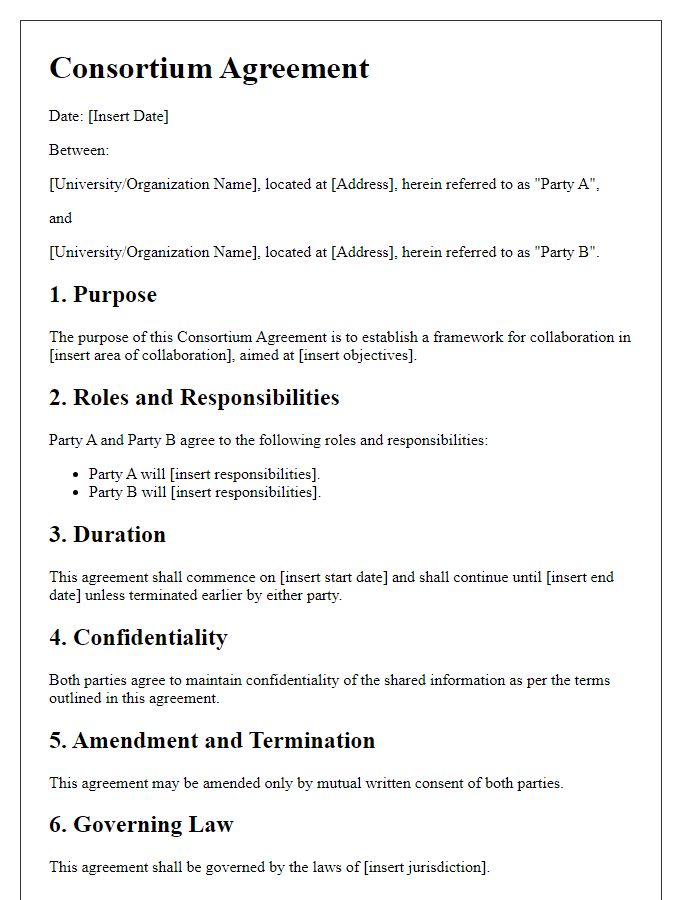
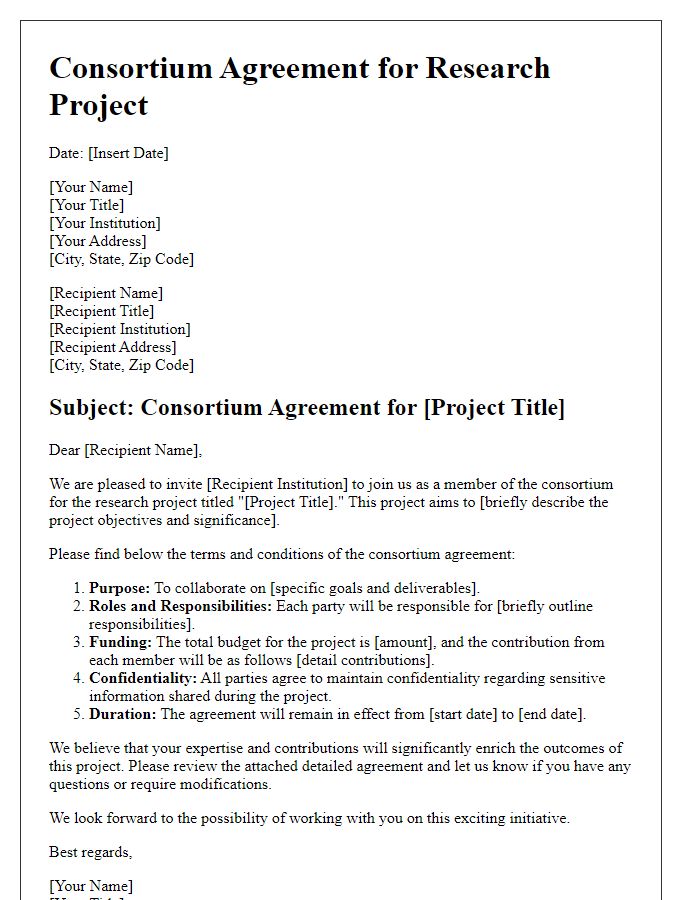
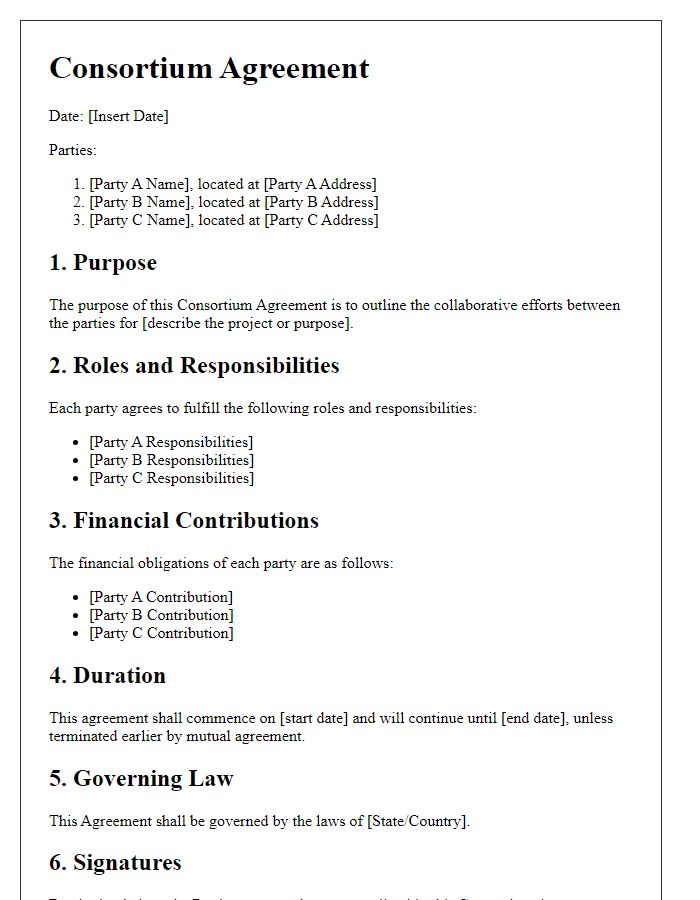
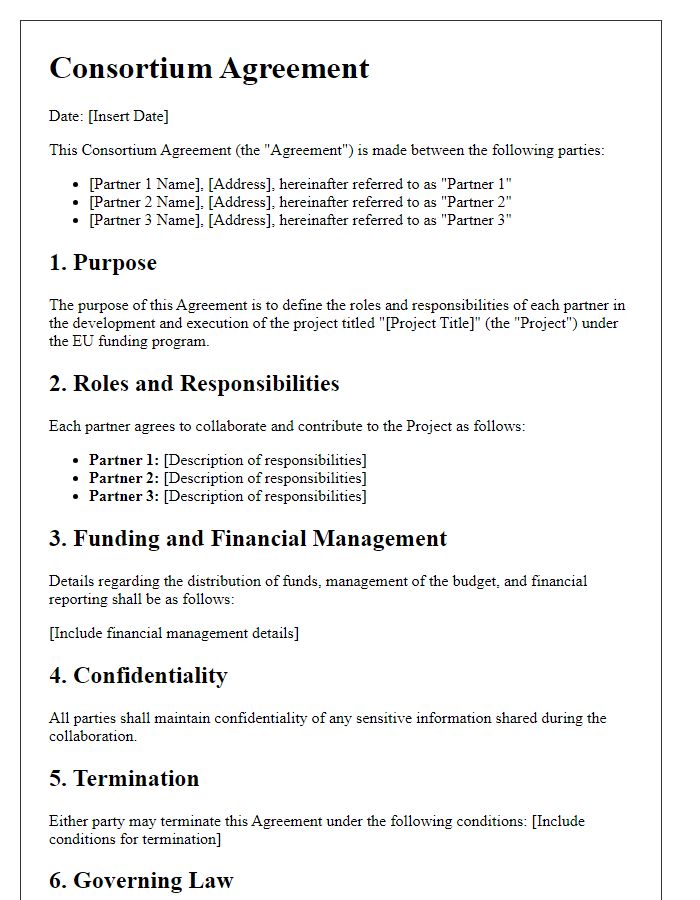
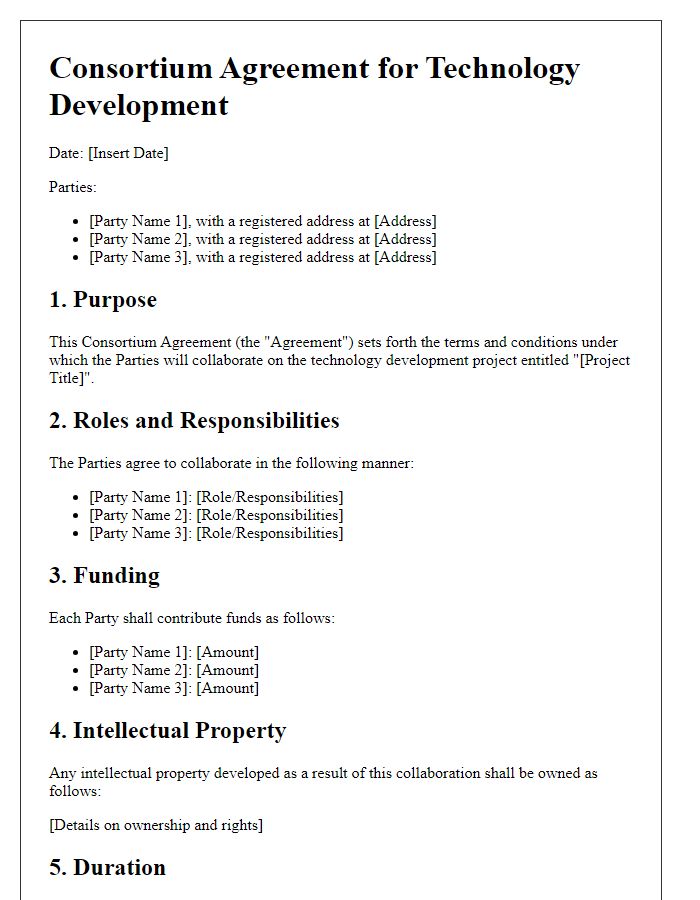
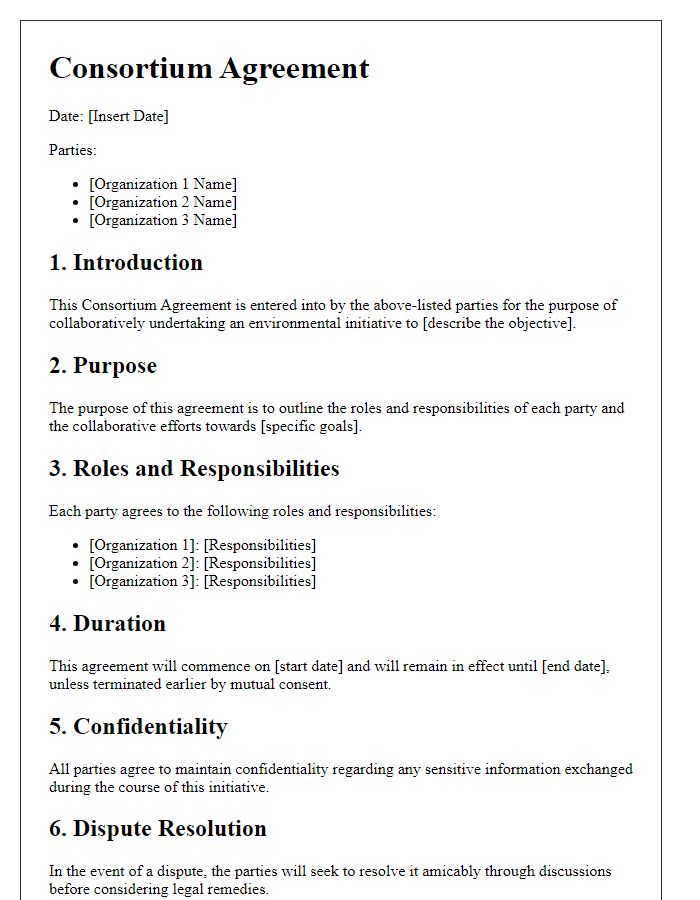
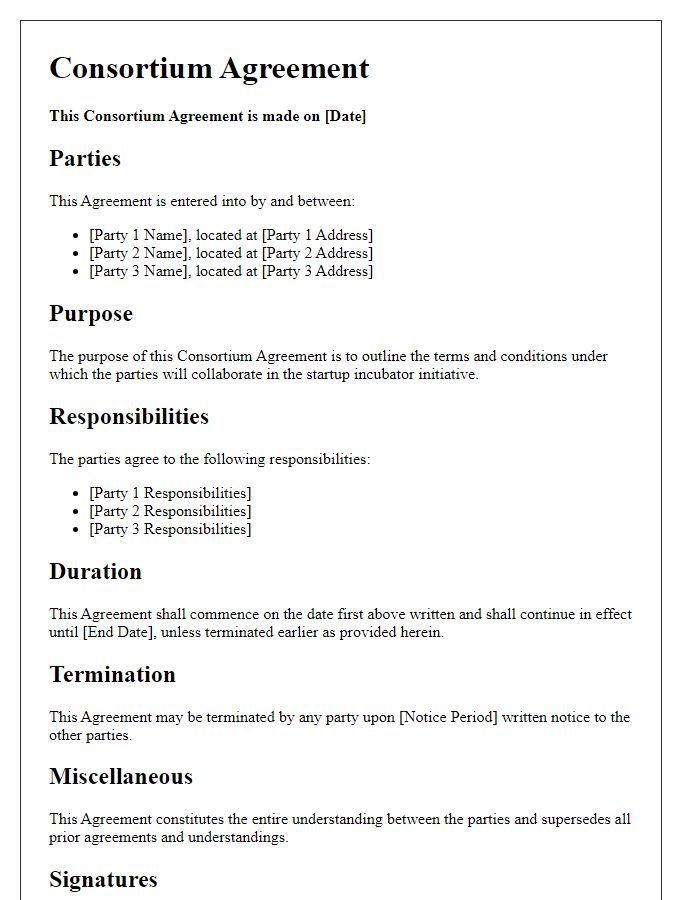
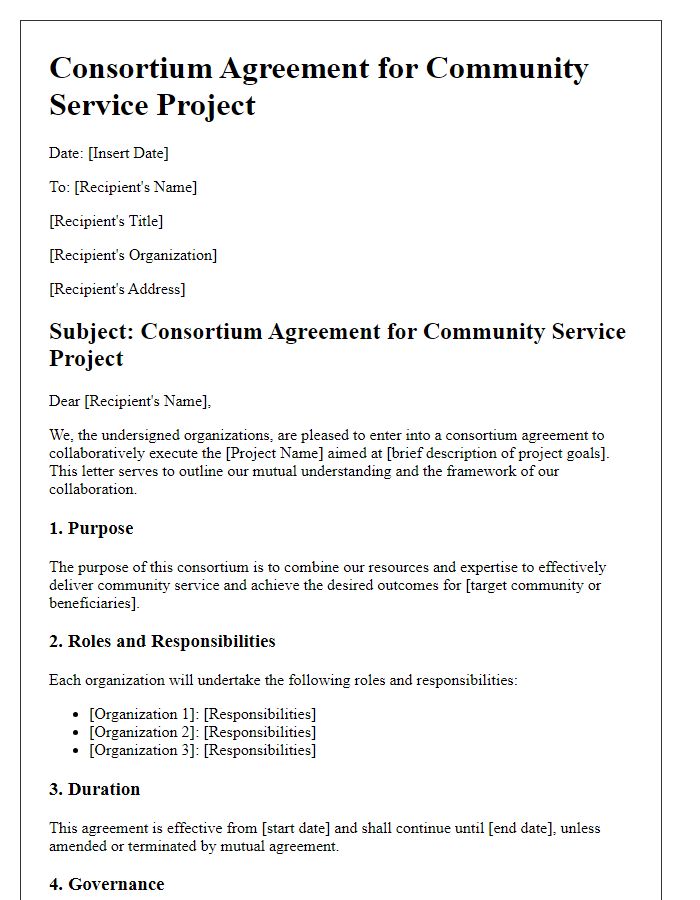
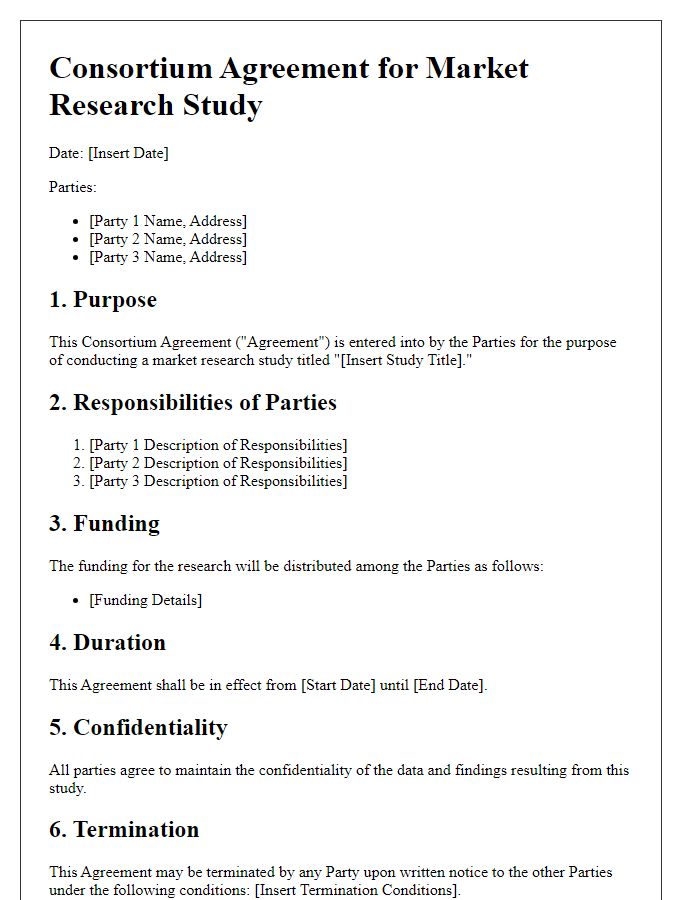
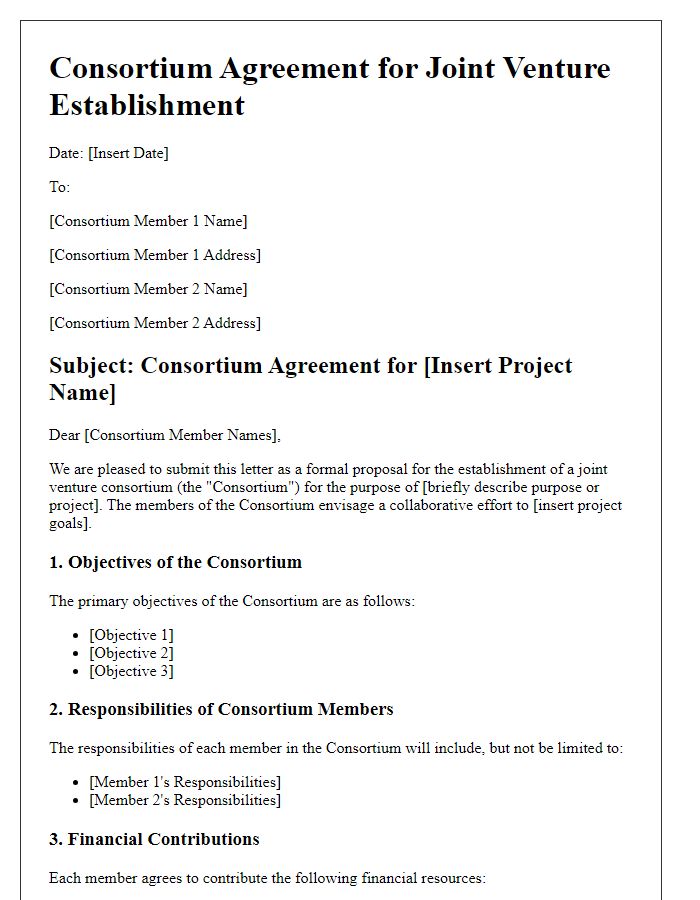


Comments